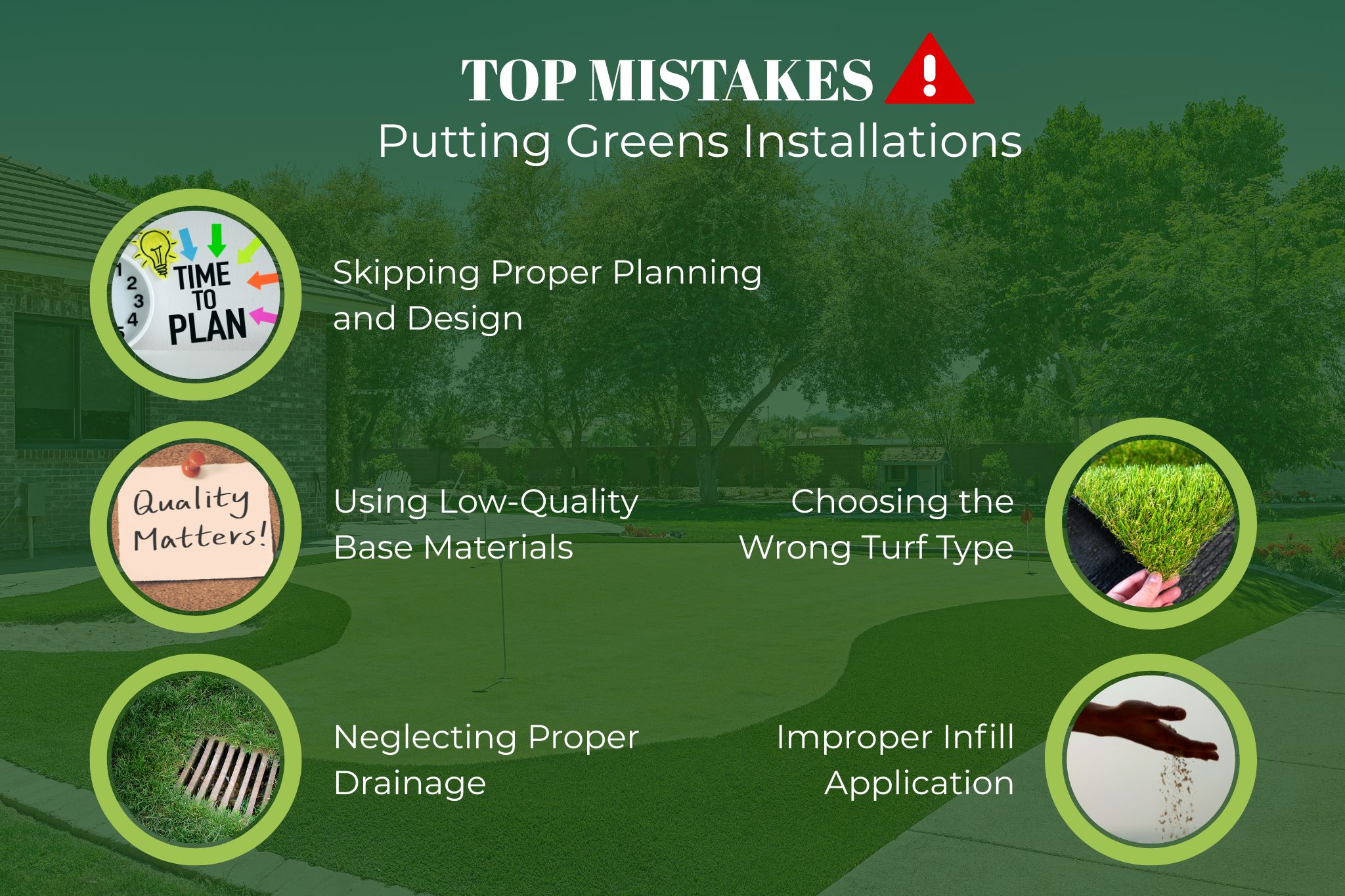
Installing a backyard putting green is an exciting way to elevate your outdoor space—offering fun, functionality, and a personalized golf experience just steps from your door. But a smooth and successful putting green installation requires more than just turf and tools. Knowing what not to do can be just as important as understanding how to install a putting green properly.
Whether you’re a weekend DIYer or planning to hire a professional, avoiding these common pitfalls will save you time, money, and future headaches.
1. Skipping Proper Planning and Design
Jumping into a project without a plan is one of the biggest mistakes homeowners make. Before you begin your putting green installation, consider:
- The shape and size of your space
- Drainage and slope
- Access points and surrounding landscaping
When you thoughtfully plan your layout, it’s easier to install a putting green in your backyard that not only looks great but also performs like a dream.
2. Using Low-Quality Base Materials
The foundation of any synthetic putting green is its base. Cheap or poorly compacted base materials can lead to uneven surfaces, poor drainage, and premature wear. Choose crushed granite or Class II road base for stability and longevity.
A strong foundation is the key to a long-lasting putting green installation—don’t skimp here.
3. Neglecting Proper Drainage
Drainage might not be the most exciting part of the process, but it’s absolutely crucial. If water doesn’t flow away from your green properly, you could face puddling, mold growth, or turf damage. Adding a simple drainage layer or French drain system can make all the difference.
Want to know how to install a putting green that stands up to the weather? Start with smart drainage planning.
4. Choosing the Wrong Turf Type
Not all artificial grass is created equal. A common issue in DIY projects is selecting turf that’s not suited for putting greens. Look for products specifically designed for golf, with tight fibers and a low pile height to mimic natural putting surfaces.
For a smooth roll and realistic feel, investing in the right synthetic turf is a must when you install a putting green in your backyard.
5. Improper Infill Application
Infill helps with ball speed, roll, and turf longevity. Many homeowners either skip infill entirely or use the wrong type. Silica sand is a top choice for putting greens—it settles between fibers to keep the surface firm and consistent.
If you’re wondering how to install a putting green that delivers a pro-level experience, infill matters more than you might think.
Need Expert Help with Your Putting Green Installation?
Avoid the stress of trial and error—our team at Synthetic Grass News is committed to helping homeowners create beautiful, high-performance greens without the guesswork. Whether you’re looking to install a putting green in your backyard yourself or want a full-service installation, we’re here to guide you every step of the way.
From product selection to professional tips, we make putting green installation easy, effective, and enjoyable.
Would you like this as a blog post, landing page, or email newsletter format? I can adjust the layout and structure accordingly.
